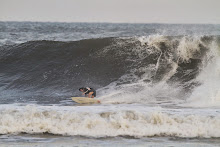Here’s Leonid coming into the airport in San Jose. This guy is a crazy Russian, in all the right ways. He is incredibly knowledgeable about virtually everything, but not in a Mr-Know-it-all way. Talking science with this guy is just as rich as rich can be.
I invited Leonid to come down to Costa Rica to make sure I correctly processed the brains of my favorite sea hare, Dolabrifera, so that he and his lab collaborators could do modern molecular magic and push forward our understanding of what genetic mechanism might account for this species singular inability to show “sensitization.” Sensitization, you might recall from earlier posts, is when an animal’s withdrawal response to a mild stimulus gets much larger following a “noxious stimulus”, traditionally, a strong electric shock. Sensitization happens in the California sea hare, Aplysia, but is completely lacking in the tropical sea hare, Dolabrifera. Two questions emerge:
What mechanism prevents reflexes in Dolabrifera from getting stronger after an electric shock?
What good does it do Dolabrifera to shed a perfectly good trait that all other sea hares seem to have?
These are the classic how and why questions one can ask of any biological phenomenon. These are where my research on Dolabrifera lies: figuring out how Dolabrifera fails to learn, and figuring out why it fails to learn.
I already have the faintest trace of an answer to both questions. Back in the 90s, my students and I tested 7 different sea slugs for a robust physiological correlate of learning. What the heck is that? Well, it is a careful term to describe something that might be a MECHANISM of learning.
It’s pretty simple, so here goes. Sensory neurons bring information from a light touch to the brain. If the signal is weak, the brain sends out a muscular response that is light. If the signal is strong, the brain says “pull hard”! The theory for what increases the reflex withdrawal in sea hares after they’ve been traumatized, is that the signal from sensory neurons in response to a light tactile stimulus gets much stronger after the animal is traumatized by say electric shock or lobster attack.
How does the sensory neuron tell the brain “pull hard“ when it is getting the same tactile stimulus that made it whisper “pull weak” before the trauma? It is pretty clear that the neurotrasmitter, serotonin is critically involved. When the sea hare is traumatized, this transmitter is released all over the nervous system. Serotonin changes the nervous system in so many ways, we are still making lists. But for our discussion, serotonin’s important effect is to cause sensory neurons that get a weak tactile stimulus to double or triple the strength of their signal to the brain. This makes the sea hare increase the strength and duration of its withdrawal response to the same weak tactile stimulus. Voila, sensitization.
In the 90s, my students and I decided to use neurophysiology to study this sensory response to serotonin in a variety of sea hares. In virtually all species, sensory signaling was increased by serotonin, just like it is in Aplysia californica. But there was one species, embedded in the family tree, whose sensory neurons were completely unchanged by serotonin. You probably guessed the name, Dolabrifera, the very same species we are studying here in Costa Rica.
So now, because of my research in the 90s, we know that Dolabrifera fails to show sensitization, most likely because its sensory neurons fail to respond to serotonin. This is not the end of the mechanistic questions, but rather the beginning. We know that sensory neurons in Dolabrifera don’t respond to serotonin. Now the question is what is it that is changed in Dolabrifera’s brain that prevents its sensory neurons from responding to serotonin?
That is where Leonid come in.
Saturday, March 13, 2010
Subscribe to:
Post Comments (Atom)

No comments:
Post a Comment